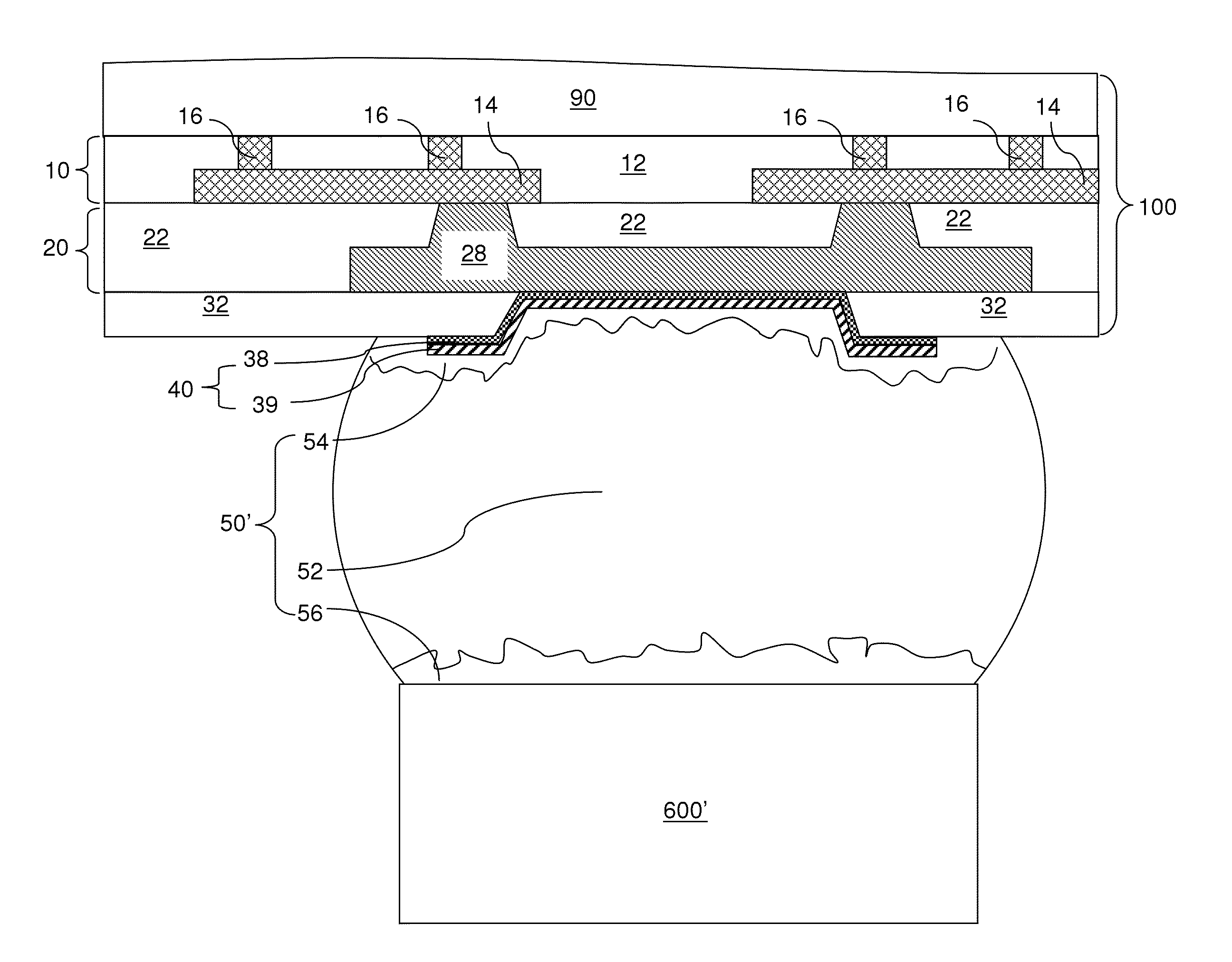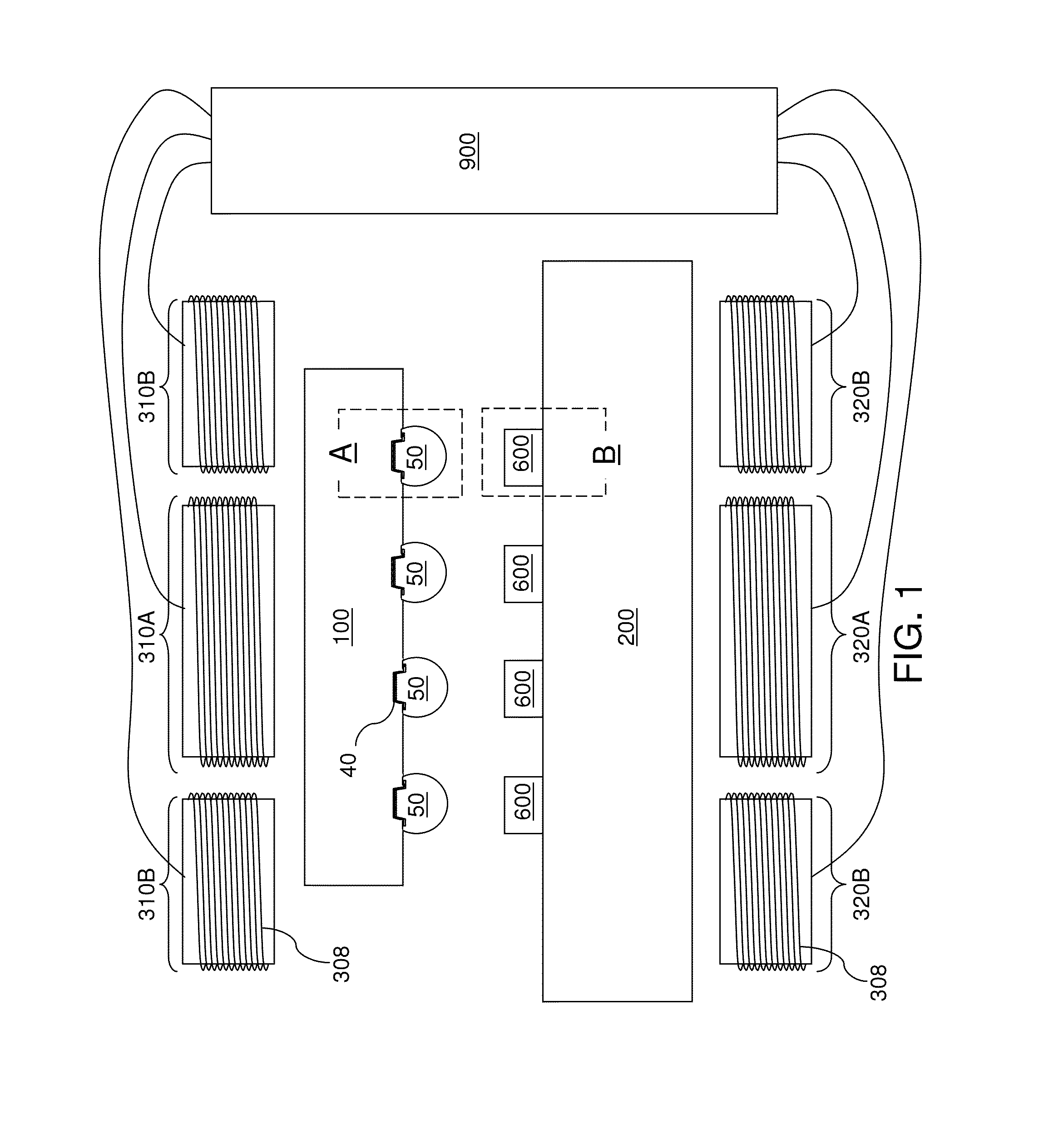Reactive bonding of a flip chip package
a flip chip and active bonding technology, applied in the field of flip chip bonding, can solve the problems of induced reliability problems, thermal warpage of packaging substrates, potential non-wet or unequal c4 solder heights, etc., and achieve the effect of minimizing heat and warpage of substrates
- Summary
- Abstract
- Description
- Claims
- Application Information
AI Technical Summary
Benefits of technology
Problems solved by technology
Method used
Image
Examples
first embodiment
[0047]FIG. 3 illustrates a first example for a bonding pad 600, which includes a single stack or multiple stacks of a unit reactive-material-including stack 60. Referring to FIG. 4, a first example for the unit reactive-material-including stack 60 is illustrated according to the present disclosure.
[0048]In the first example of the unit reactive-material-including stack 60, two material layers are present. One of the two material layers includes the first material, and other of the two material layers includes the second material. A magnetic material can be selected for the first material and a non-magnetic material can be selected for the second material such that the first and second materials form a pair of reactive materials, which, upon ignition, react spontaneously to form an alloy or a composite of the first material and the second material.
[0049]The layer of the first material is herein referred to as a magnetic material layer 6, and the layer of the second material is herein...
second embodiment
[0052]Referring to FIG. 5, a second example for the unit reactive-material-including stack 60 is illustrated according to the present disclosure. In the second example of the unit reactive-material-including stack 60, three material layers are present. In this example, the first material and the second material are non-magnetic materials. The magnetic material is the additional material that is present in each of the unit reactive-material-including stack 60. One of the three material layers includes the first material, and is herein referred to as a first non-magnetic material layer 7. Another of the three material layers includes the second material, and is herein referred to as a second non-magnetic material layer 8′. Yet another of the three material layers includes the additional material, i.e., the magnetic material, and one of the first material and the second material. The layer that includes the additional material and one of the first and second materials is herein referre...
third embodiment
[0061]Referring to FIG. 6, a second example of a bonding pad 600 according to the present disclosure is illustrated. The second example of the bonding pad 600 includes a pair of a first material and a second material that constitute a set of reactive materials. The first material can be a magnetic material, and the second material can be a non-magnetic material.
[0062]The second example of the bonding pad 600 includes a matrix 6M of the first material and embedded non-magnetic particles 8P of the second material. An array of bonding pads 600 can be provided on the second substrate 200 by forming a material layer including a matrix of the first material embedding particles of the second material on the second substrate 200, and subsequently patterning the material layer to form the array of bonding pads 600. The matrix 6M of the first material and the embedded non-magnetic particles 8P of the second material can be formed by alternately depositing the first material and the second mat...
PUM
| Property | Measurement | Unit |
|---|---|---|
| thickness | aaaaa | aaaaa |
| diameter | aaaaa | aaaaa |
| diameter | aaaaa | aaaaa |
Abstract
Description
Claims
Application Information
 Login to View More
Login to View More - R&D
- Intellectual Property
- Life Sciences
- Materials
- Tech Scout
- Unparalleled Data Quality
- Higher Quality Content
- 60% Fewer Hallucinations
Browse by: Latest US Patents, China's latest patents, Technical Efficacy Thesaurus, Application Domain, Technology Topic, Popular Technical Reports.
© 2025 PatSnap. All rights reserved.Legal|Privacy policy|Modern Slavery Act Transparency Statement|Sitemap|About US| Contact US: help@patsnap.com



